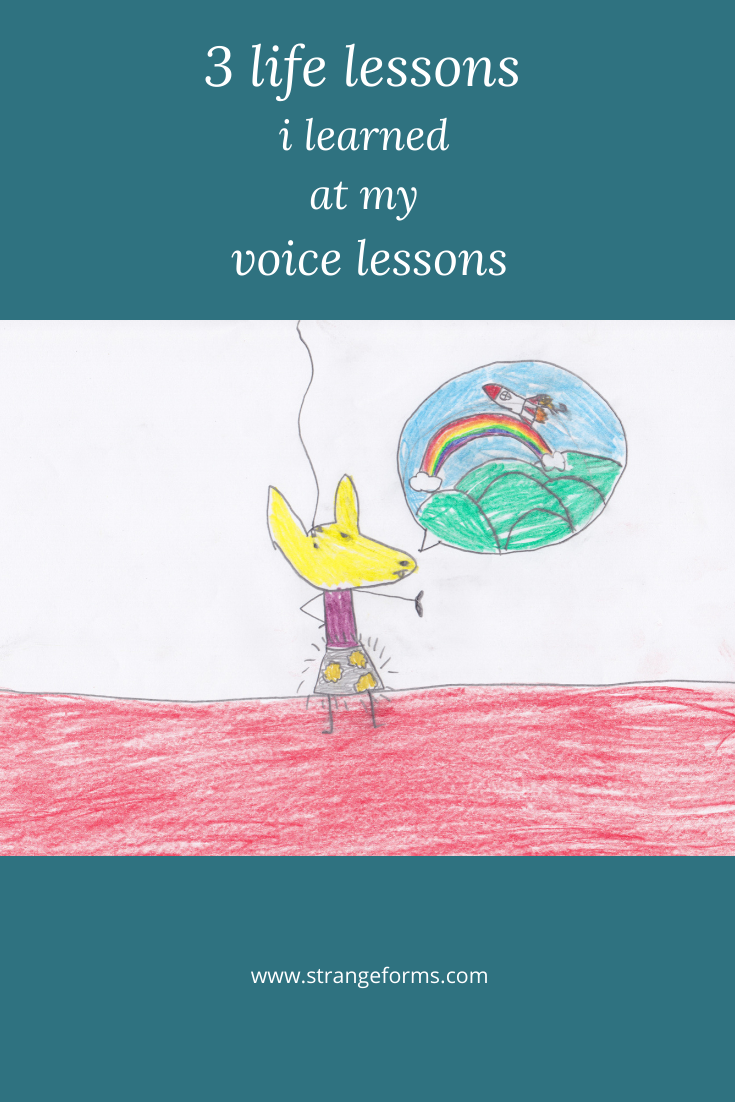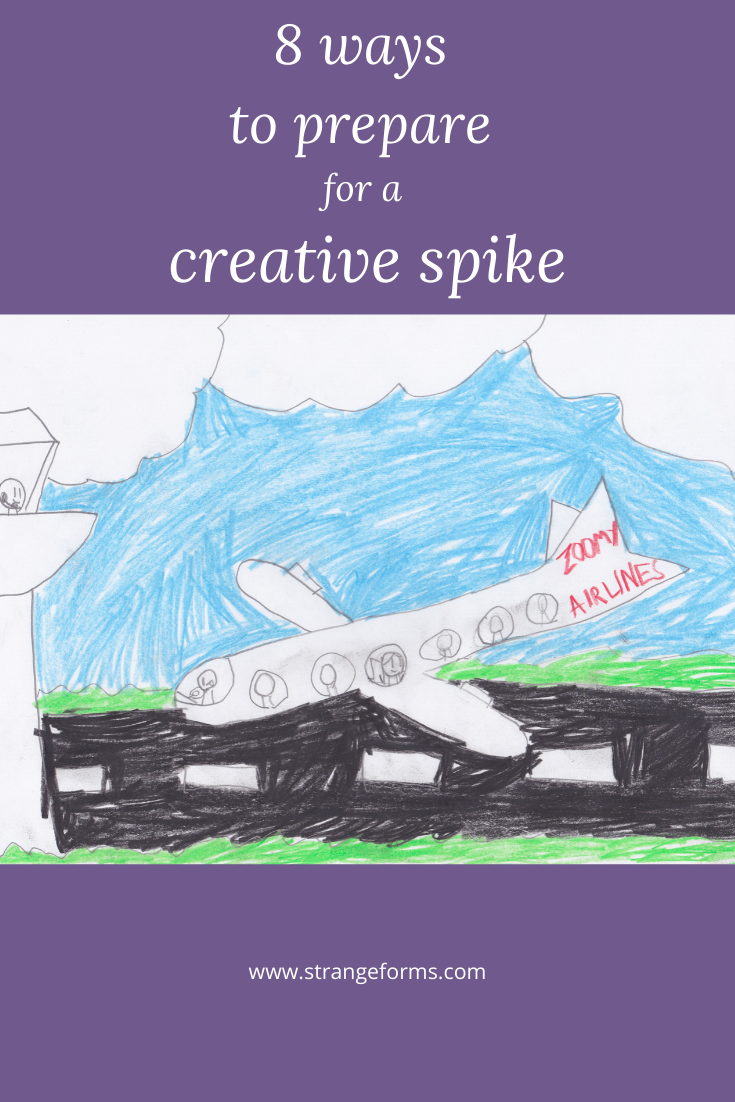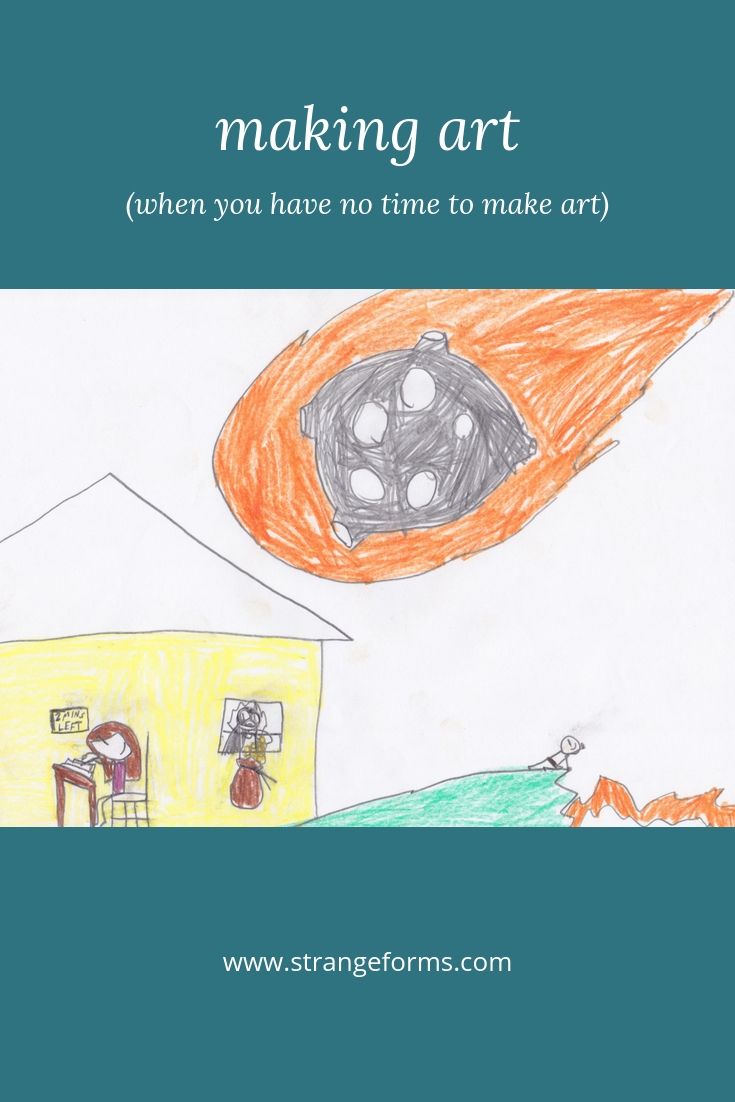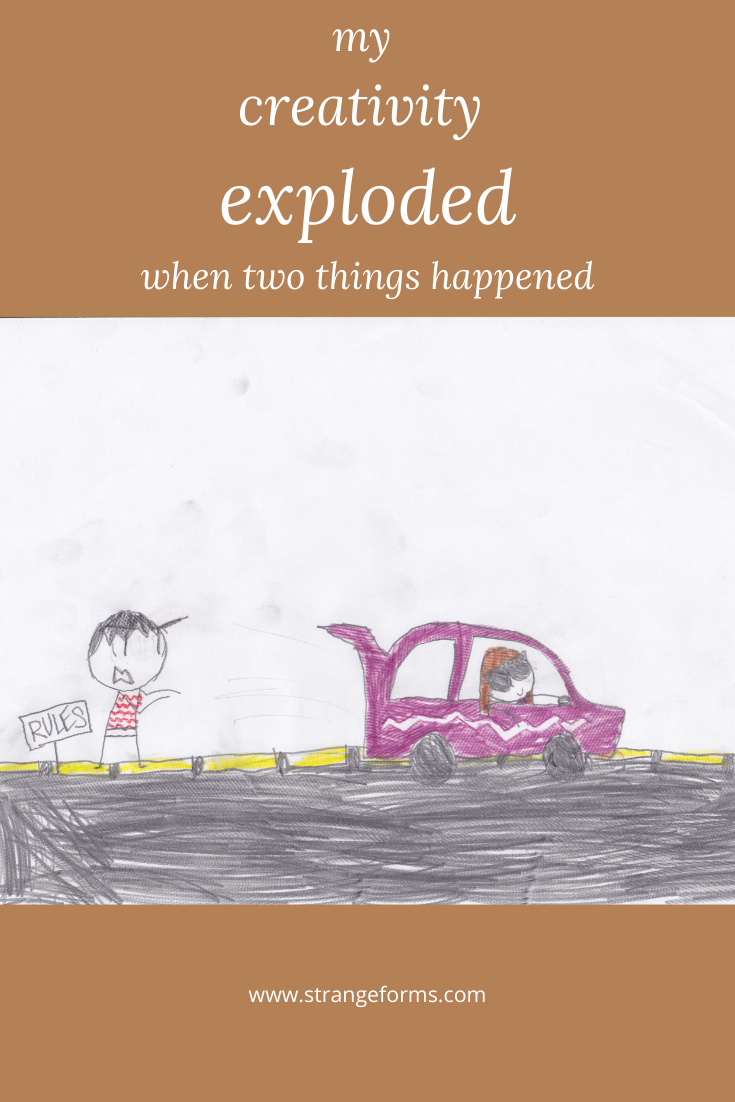I went back to voice lessons a few years ago, because I’d developed some poor muscular habits (due to a chronically inflamed larynx) that prevented me from producing the sound correctly.
My voice is in much better shape now, but I still go to lessons because I love them. (Not during the current lockdown, even though we could totally do it over video, because what is time? Scheduled appointment? These words mean nothing. Eventually I will get my shit together and sort this out. Sigh.)
Anyway. These lessons have taught me so much – and not just about singing, as we shall see.
Metaphor
Voice lessons, once you get past the very basic techniques, are all about metaphor.
Singing teachers (and choral conductors, who dish out a fair bit of vocal technique) have a great repertoire of images – they’ll tell you to picture a string connecting the top of your head to the ceiling, and then they’ll tell you to breathe in and imagine that your torso is a lampshade and your face looks like an aardvark, and then as you sing they’ll tell you to see the musical phrase as a rainbow, or a series of hills, or a cat jumping onto a spaceship (you’d think that one was a once-off, but you’d be wrong).
It’s a curious thing, trying to teach another person to move internal muscles in an unfamiliar way when nobody can really see what’s going on.
As a teacher, you can adjust a student’s posture, and you can gauge breathing support techniques using a hand on the ribcage, but nearly all of what you have to go on, to tell you whether or not the student is doing the right thing on the inside, is the sound.
The sound is the proof of the musical pudding.
If my voice sounds clear and rich and full and open and effortless, my teacher knows I’m following her instructions correctly.
If it sounds coarse and reedy and thin and squished and strained, we do another round of aardvarks and rainbows and try again.
So it turns out, right?
You’ll never guess.
It turns out that what I have to learn about voice production is also what I have to learn about life.
(Profound, no? I knew you’d agree.)
Lesson One: Trust (part 1)
Getting to that sound-production sweet spot, at least for me, is all about bringing my voice forward and not “protecting” the sound.
I have a habit of balking at the top note of a phrase, for instance, in case it comes out too flat, too sharp, or too loud. But when I pull back and protect it, that sounds almost as bad.
By protecting, we bring worry into the picture, which means we fail to be present. We judge – and what’s worse, we prejudge. And that turns our fears into self-fulfilling prophecies.
Trusting the voice is hard, and it’s scary, but it’s the only way to succeed.
Lesson Two: Trust (part 2)
The trust thing is annoying, but what’s downright weird is the fact that if I keep the sound further back it sounds better to me, whereas if I’m doing it right – making a thrilling, round, gorgeous sound – it sounds thinner and shriller from inside my head.
It’s risky to rely on your own assessment of your art.
Trying to hear yourself sing is like trying to look up your own nose: unedifying in a number of respects. The same goes for trying to gauge the emotional impact of your novel or your painting or your poem.
Can’t be done.
Lesson Three: Focus
The one thing the singing mavens almost never tell you to imagine?
The stage.
The audience.
The applause.
All of that is strictly and definitely not your business. That stuff is shimmer, not blaze. What you need to focus on is you and the work, and sending this performance out into the world as best you possibly can.
That’s where your responsibility ends.
And … breathe.




